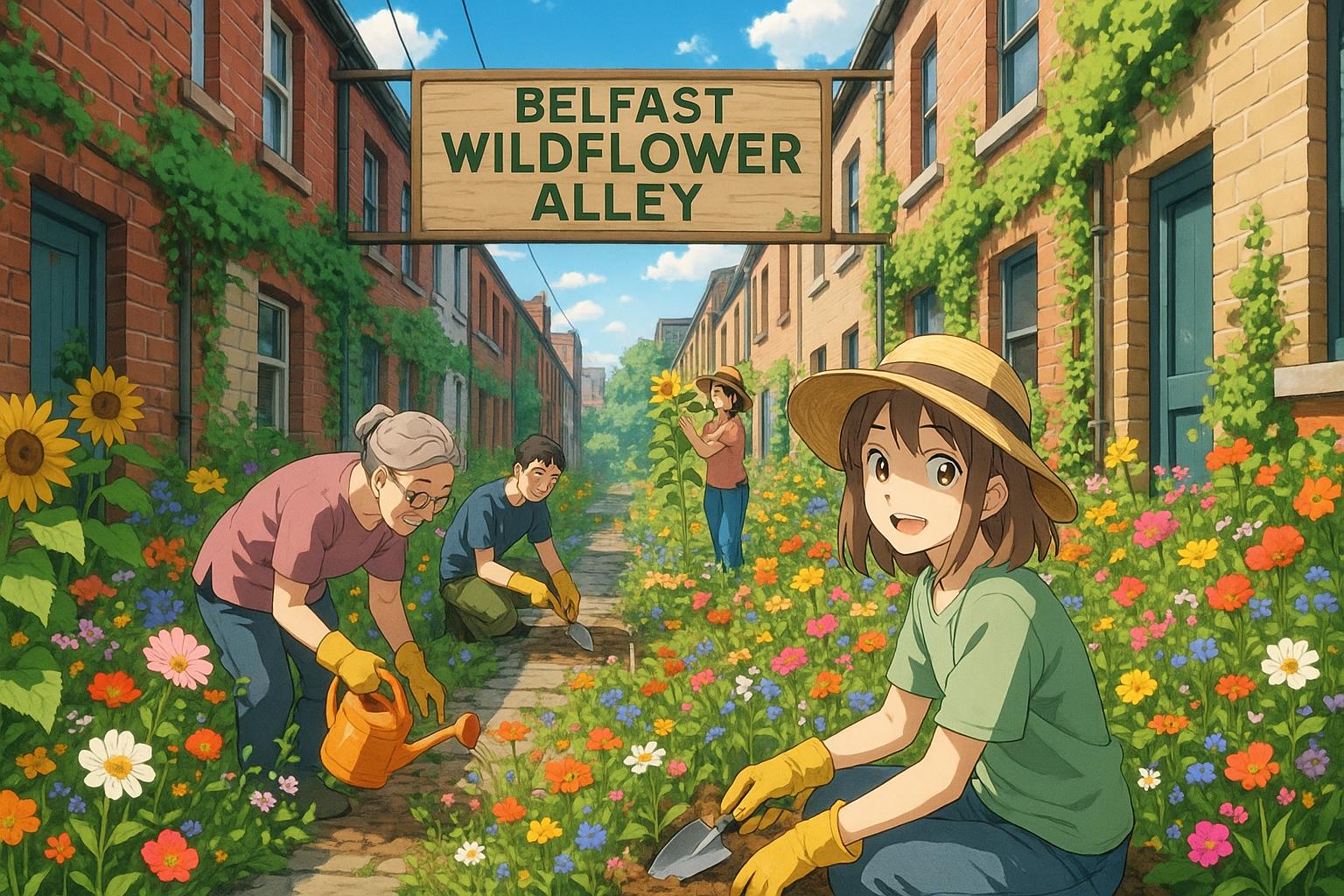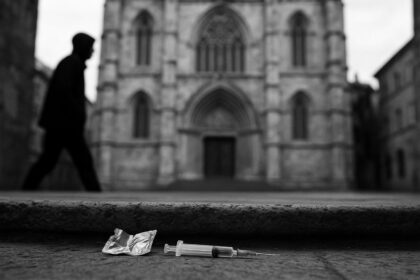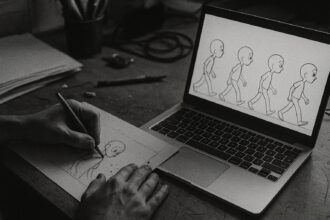Once plagued by anti-social behaviour and litter, Belfast’s Wildflower Alley celebrates 10 years as a pioneering community-led green space, transforming urban alleys into hubs of environmental stewardship and social cohesion, with ongoing support from local residents and Queen’s University.
Over the past decade, the transformation of a once-neglected alleyway in Belfast’s Holylands area has become a remarkable testament to community spirit and environmental stewardship. Ten years ago, the alleyways behind Queen’s University were perceived as unsafe, plagued by anti-social behaviour and litter. Brid Ruddy, a local resident, recalls the prevailing atmosphere: “They weren’t safe. They were a focal point for anti-social behaviour and robberies.” With a steadfast resolve, residents lobbied for four years to get alley gates installed, paving the way for significant change.
What emerged from those efforts is now celebrated as Wildflower Alley, part of Belfast’s pioneering alleyway regeneration programme. This vibrant green space is no longer a dumping ground but a flourishing community hub where residents can connect, relax, and participate in events. Ruddy, who has been instrumental in the evolution of the alley, reflects on the profound progress, stating, “It was literally a place where people dumped their rubbish… Now we have a space that people take pride in.”
The ripple effect of this initiative extends beyond the confines of Wildflower Alley. Jean Campbell, a visitor from Ormeau Road, expressed her pride in her own community garden, inspired by the original project’s success. “It has brought the whole community together,” she noted. Meanwhile, Deirdre Seaby, a long-time resident, articulates the alley’s impact on daily life: “It’s amazing how much more pleasant it is today. We all love it.” The burgeoning movement toward green spaces represents not just environmental vitality but a cultural shift towards community cohesion.
Ruddy’s commitment to sustain Wildflower Alley includes securing ongoing funding to ensure it remains vibrant for future generations. This focus on long-term ecological benefits aligns with broader concerns about climate change and mental well-being. She emphasises the value of these green spaces, noting their vital role in “creating community cohesion and helping regeneration in neighbourhoods.” Fellow residents echo this sentiment, relishing the fact that their local area fosters not only physical beauty but profound social connections.
A significant contributor to the vitality of Wildflower Alley has been the support from Queen’s University. With students volunteering to maintain the space, local residents benefit from both educational and communal engagement. Georgina Copty from Queen’s Foundation highlighted the institution’s dedication to the surrounding community: “We are trying to plant that seed of community spirit, and hopefully others will follow suit.” The collaboration speaks to the potential synergies between educational institutions and local neighbourhoods in achieving sustainable urban development.
The concept of utilising urban alleyways as green spaces is gaining traction across Belfast and beyond. Experts have pointed to the city’s 202 kilometres of alleys, suggesting that their potential could significantly enhance community resilience. Initiatives like Eden Alley and Herman’s Way serve as vital examples of how such projects foster social interaction through gardening and communal gatherings.
Belfast City Council is also exploring the transformation of urban landscapes. Recent undertakings, such as the creation of a community garden at the Belfast Stories site, aim to enhance biodiversity and combat pollution while promoting psychological health benefits for participants. Within the context of these projects, the city is taking affirmative steps towards a greener urban fabric.
As Wildflower Alley celebrates its 10-year anniversary, it stands not only as a model of successful community-led regeneration but also as a hopeful beacon for similar efforts across other Belfast neighbourhoods. Brid Ruddy’s final plea for broader support from statutory agencies reinforces the necessity of public commitment to sustain and replicate these initiatives. “It brings nothing but positives,” she asserts, reflecting a shared sentiment that the evolution of urban spaces can indeed promote both community spirit and environmental stewardship.
Reference Map:
- Paragraph 1 – [1], [2]
- Paragraph 2 – [1], [3], [4]
- Paragraph 3 – [2], [6]
- Paragraph 4 – [1], [5]
- Paragraph 5 – [3], [6]
Source: Noah Wire Services
- https://m.belfasttelegraph.co.uk/news/northern-ireland/residents-joy-as-belfasts-original-wildflower-alley-celebrates-10-years/a363142023.html – Please view link – unable to able to access data
- https://www.rte.ie/news/2022/0430/1294644-belfast-alley-garden/ – In April 2022, Bríd Ruddy, the driving force behind Belfast’s Wildflower Alley, highlighted the transformation of a neglected alley in the Holylands area into a vibrant community garden. Initiated in 2015, the project began with the installation of security gates to address issues like anti-social behaviour and dumping. Residents then reclaimed the space, planting wildflowers and herbs, and painting fences with multi-coloured designs. The initiative has not only beautified the area but also fostered community spirit and inspired similar projects across Belfast. Ruddy emphasised the importance of such green spaces in combating climate change and enhancing mental well-being.
- https://www.belfasttelegraph.co.uk/news/northern-ireland/wildflower-alley-seeds-of-pride-planted-in-holylands-regeneration-scheme/31447780.html – In 2015, residents of Belfast’s Holylands area embarked on a regeneration project inspired by Chicago’s green alleys. They transformed a neglected alley into Wildflower Alley, planting wildflowers and herbs, and painting fences with vibrant designs. The initiative aimed to reclaim the space from anti-social behaviour and foster community spirit. Brid Ruddy, chairwoman of the College Park Avenue Residents Association, noted the project’s success in reducing isolation and lifting community morale. The project has been hailed as the most positive community-led initiative in the area, with students from Queen’s University also contributing to its success.
- https://www.laurelbankfarm.org/recipes/the-growing-potential-of-belfasts-alleyways – Jo Facer discusses the untapped potential of Belfast’s 202 kilometres of alleyways, which could cover 54 hectares if utilised. She highlights the transformation of several alleys into community gardens, such as Eden Alley in North Belfast and Herman’s Way in East Belfast. These projects have fostered community spirit, with neighbours gathering to share gardening tips and enjoy fresh produce. Facer emphasises the environmental and social benefits of converting these spaces into green areas, suggesting that such initiatives could lead to a more resilient and sustainable community.
- https://www.belfastlive.co.uk/news/belfast-news/belfast-city-centre-site-transformed-28512475 – Belfast City Council, in partnership with The Conservation Volunteers, is transforming a section of the Belfast Stories site on Royal Avenue into a community garden. This initiative is part of the ‘Grey to Green’ project, aiming to introduce temporary green spaces in the city centre. The garden will feature polytunnels, raised planters, and vegetable beds, and will be accessible to the public for approximately 18 months. The project seeks to combat pollution, encourage biodiversity, and enhance the urban environment, while also providing mental health benefits to participants.
- https://www.qub.ac.uk/directorates/EstatesDirectorate/SustainabilityatQueens/Biodiversity/ – Queen’s University Belfast has been actively involved in enhancing biodiversity both on campus and within the wider Belfast community. The Elm’s BT9 Student Allotment, established in 2019, was created by student volunteers in partnership with The Conservation Volunteers. The allotment aims to promote green spaces, increase biodiversity, and support mental well-being by providing a space for relaxation. The project has been successful, with seven beds planted with various plants and vegetables, and plans to implement composting and host workshops in the future.
- https://friendsofthefield.co.uk/news – Friends of the Field, a community group in Belfast, has been actively involved in developing a community garden. In October 2023, they began installing fence posts and gates, marking the start of the garden’s creation. The group has been collaborating with the Belfast City Council Climate Team and Grow! to develop the space. In May 2023, they held a workshop on developing a community garden, creating a ‘wish list,’ and drawing up preliminary plans. The group recognises the importance of urban and community resilience in addressing climate and biodiversity crises.













